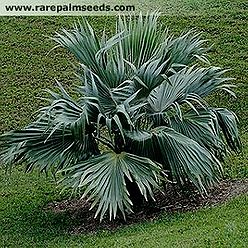Difference between revisions of "Pritchardia hillebrandii 'blue form'"
| Line 65: | Line 65: | ||
image:PriBlu5.jpg|Photo-Rare Palm Seeds.com | image:PriBlu5.jpg|Photo-Rare Palm Seeds.com | ||
image:Hillebrandii.jpg|Hawaii. Photo by Mike Merritt, edric. | image:Hillebrandii.jpg|Hawaii. Photo by Mike Merritt, edric. | ||
| − | image: | + | image:|McBryde Gardens at the NTBG in Kauai. Photo by Kyle Wicomb, edric. |
image: | image: | ||
image: | image: | ||
Revision as of 04:42, 7 February 2014
<google>CH02</google>
| Pritchardia (pritch-AHR-dee-uh) hillebrandii (hill-eh-BRAND-ee-eye) 'blue form' | |||||||
|---|---|---|---|---|---|---|---|
 | |||||||
| Scientific Classification | |||||||
| |||||||
| Synonyms | |||||||
|
| |||||||
| Native Continent | |||||||
|
| |||||||
| Morphology | |||||||
| |||||||
| Culture | |||||||
|
| |||||||
| Survivability index | |||||||
|
| |||||||
| Common names | |||||||
|
| |||||||
Contents
Habitat and Distribution
Description
Culture
Comments and Curiosities
Etymology: Pritchardia name is dedicated to William Thomas Pritchard (1829-1907), British official stationed in Fiji in the 19th Century, British counsul in Fiji, adventurer, and author of Polynesian Reminiscences in 1866.
Pritchardia hillebrandii is variable in overall appearance, common var. with green leaves, ranging to the "blue dwarf" which has, according to specimen, more or less waxy glaucous leaves on both sides. The "blue dwarf" is regarded as especially attractive. Rock (1921) described a 'robust' variety with very large leaves, being cultivated near Kamalo on Molokai, but commented that the size of the palm may be due to soil conditions. {Wagner, W.L., Herbst, D.R. & Sohmer, S.H. 1990)
Huelo Isle Blue Palm.
Everything about this palm is simply spectacular, its habitat, its color and its rarity. It is found only on the tops of two inaccessible, stack-like, rock islets off the northern coast of the Hawaiian island of Molokai, where it probably survives because the islets are free of rats and mice. Even though the population here has been determined to be P. hillebrandii, there is considerable discussion about this as the plants show a number of significant differences from P. hillebrandii elsewhere, such as their heavier, thicker, bluish leaf, longer, upright flower stalks and oblong rather than round seeds. The Huelo Blue cultivar is not to be confused with the so-called P. hillebrandii "Dwarf Blue" that has been widely offered for many years and is not all that blue but rather slightly glaucous at best. Huelo Blue was started with seeds from the bluest Huelo islet plants that then underwent a rigorous selection for only the best, bluest leaf color. Only these were used to propagate further and eventually produce the seeds offered here. Seedlings will be green at first, then gradually turn glaucous as they attain a few years of age. At this point, their much thicker leaf texture is also easily observed. While we know that mature plants will show the full effect of the spectacular coloration, the onset of it can vary considerably in individual plants, i.e. some will turn blue after only a few years while others may take 10 years or more. Light, exposure and soil likely play a role in this as well. Also, not all plants produced from these seeds may come up blue, but a high percentage will. Although patience will be required with this plant, it is the hottest new introduction in palms since the Silver Bismarckia. It will do well nearly anywhere in warm temperate areas as well as in the tropics and can take direct coastal exposure, some drought and light freezes. Besides the Silver Bismarckia it is the only blue palm really suitable for the tropics but can take more coastal exposure as well as having a much more manageable size. (RPS.com), edric.
External Links
- Glossary of Palm Terms
- Pronunciation Key
- http://myloulu.wordpress.com/2010/09/13/the-island-of-oahu/
- http://myloulu.wordpress.com/2010/09/08/the-island-of-maui/
- http://myloulu.wordpress.com/2010/09/27/the-islands-of-niihau-and-nihoa/
- http://myloulu.wordpress.com/2010/09/06/the-island-of-hawaii/
- http://myloulu.wordpress.com/2010/09/21/the-island-of-kauai/
- http://myloulu.wordpress.com/2010/09/08/the-island-of-lanai/
- http://myloulu.wordpress.com/2010/09/08/island-of-molokai/
- http://hanapalms.wordpress.com/2010/07/
- http://www.biomedcentral.com/1471-2148/12/23
References
Phonetic spelling of Latin names by edric.
Special thanks to Geoff Stein, (Palmbob) for his hundreds of photos, edric.
Special thanks to palmweb.org, Dr. John Dransfield, Dr. Bill Baker & team, for their volumes of information and photos, edric.
- IMAGE GALLERY
Many Special Thanks to Ed Vaile for his long hours of tireless editing and numerous contributions.








